2 specific conditions the anak bulan must meet before Hari Raya is confirmed

- 2.1KShares
- Facebook1.9K
- Twitter5
- LinkedIn15
- Email14
- WhatsApp102
A few days before Ramadan starts, you’ll probably start seeing a few headlines about our local observatories looking out for the appearance of the crescent moon or anak bulan. If they do spot it, then for the Muslims, this would confirm the start of the fasting month. For the non-Muslims, this would confirm the start of pasar Ramadan.

Kidding guys we all go Pasar Ramadan.
But if you think about it, we’ve already calculated calendars hundreds of years into the future. If that’s the case, why do we still need to actually see it? Because we’re curious and this writer is a big nerd, so we went to the observatory at Pusat Falak Sheikh Tahir in Penang to find out why.
It was done in line with Prophet Muhammad’s practice
Malaysia actually does both: we calculate the anak bulan’s appearance AND get a confirmed visual sighting of it.
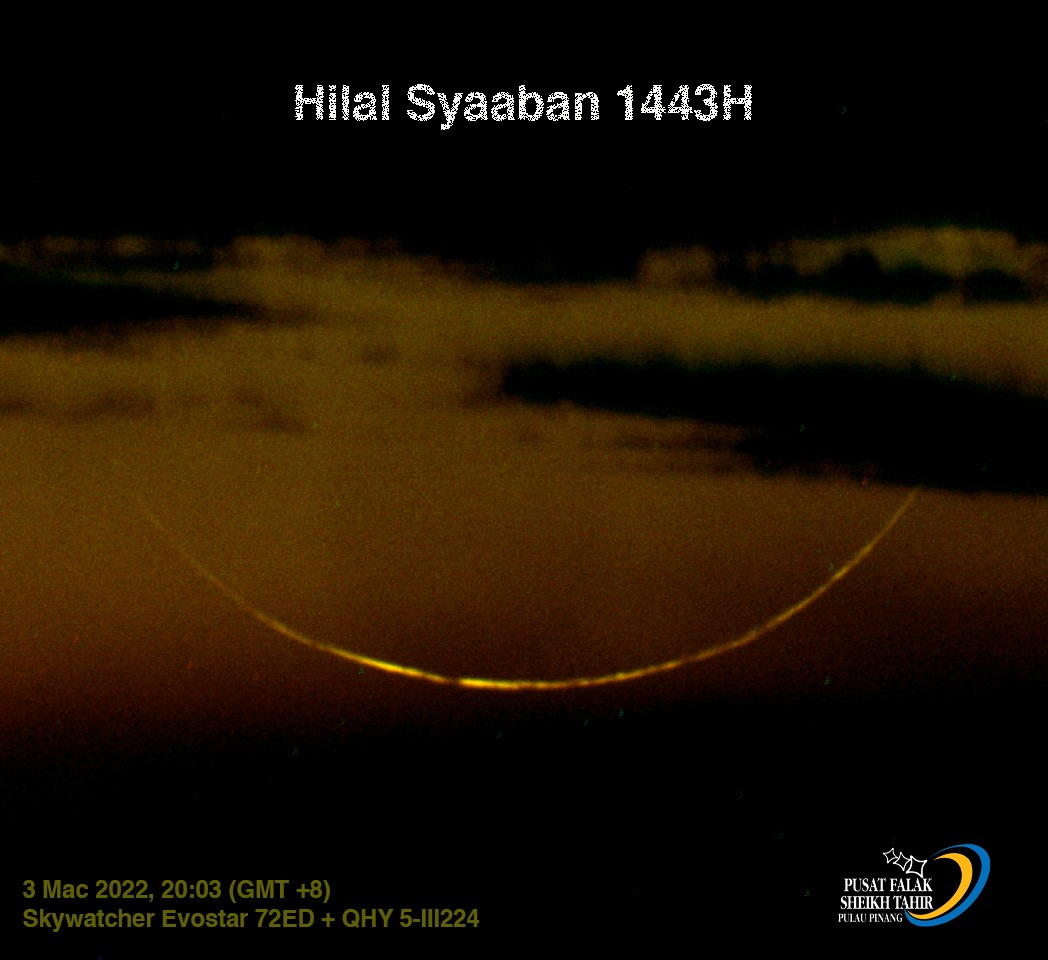
The starting of the crescent moon. Image courtesy of Pusat Falak Sheikh Tahir
It might seem a bit extra, but it’s done to follow Prophet Muhammad’s (PBUH) sunnah or practice to look for the crescent moon to confirm the start of Syawal – the Hari Raya month. Because the Islamic calendar is based on the moon’s phases which takes 29.5 days to complete, a month can either have 29 or 30 days, and you confirm it by checking if the crescent moon appears on the night of the 29th. This was waaaay before we developed canggih technology to count everything, so the only way to be sure was to check it with your own eyes.
How you determine the days in the month is pretty simple: if you see the crescent moon, the current month has 29 days and the new month starts tomorrow. If not, then the current month has 30 days. But if for some reason you can’t see it, then you can just calculate when it should appear.
“We’ll observe for the crescent moon based on the calculated data to confirm it, in accordance with the Prophet Muhammad’s PBUH sunnah who observed it in his time.” – Spokesperson for Pusat Falak Sheikh Tahir, translated into English by Cilisos
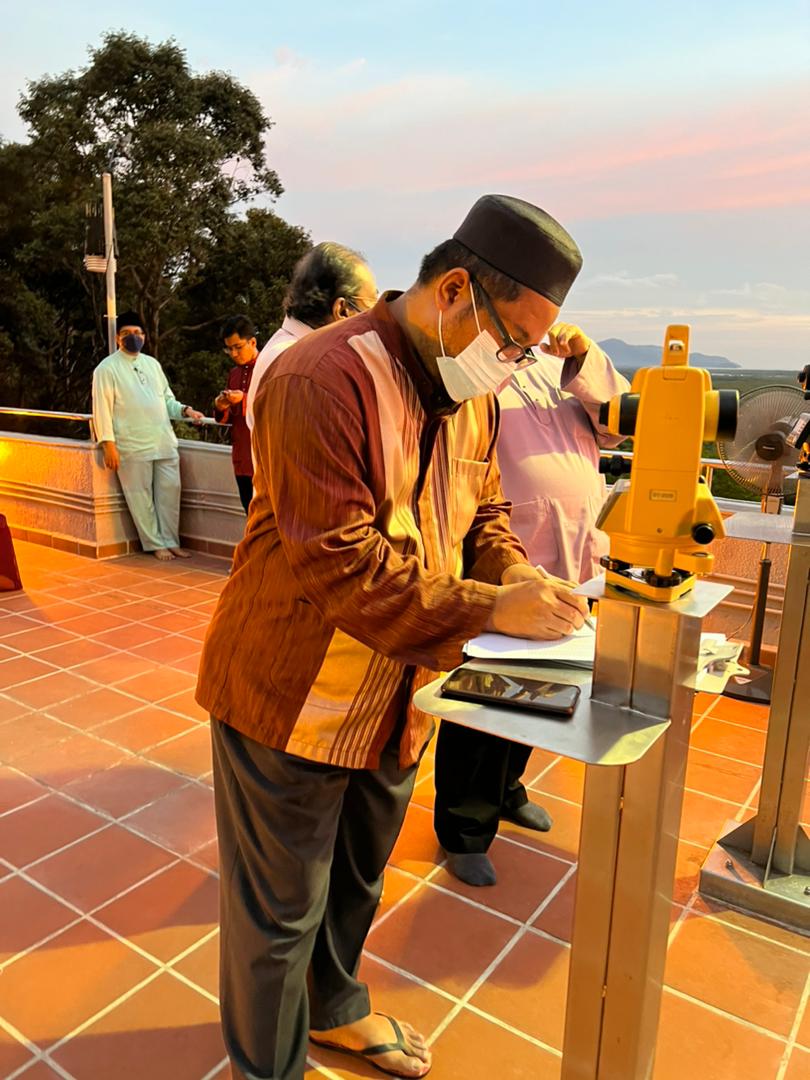
Image courtesy of Pusat Falak Sheikh Tahir.
This method of observing and calculating is called the Imkanur Rukyah method, which would avoid issues such as clouds obscuring the night sky, which was exactly what happened on the day we went there 🥲
So when that happens, it’s enough to depend on the calculation itself. However, as there are 29 observatories across Malaysia looking for a sighting of the moon, at least a few of those would get a glimpse of it.
“If we can’t sight the crescent moon due to the weather [on the 29th], but according to the astronomical calculations the crescent moon fulfills the set criterias, then the next day would be the start of the new Islamic month.” – Pusat Falak
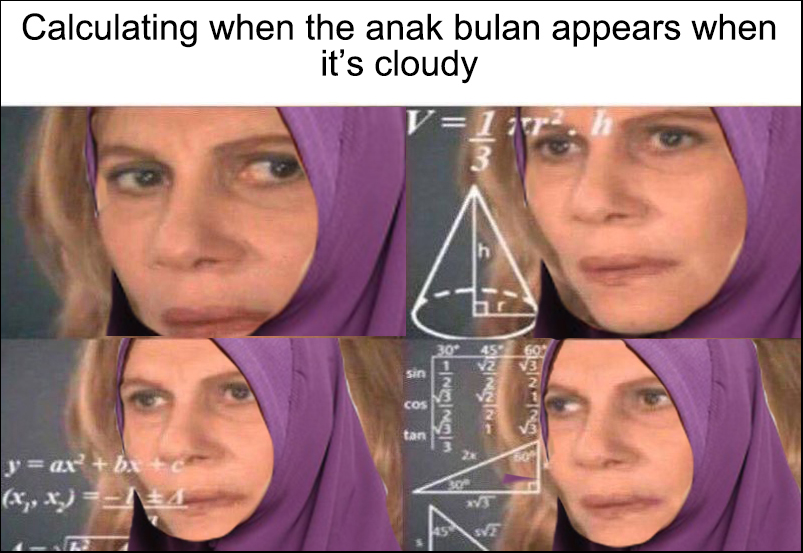
Calculate but make it halal.
There’s a strict definition of what the crescent moon is
There’s actually a very specific definition for what is considered anak bulan or the first crescent moon. The viewing is done as the sun sets on the horizon, and the requirements are:
- The moon at sunset is above the horizon more than 2 degrees, and the curving distance between the moon and sun is more than three degrees (look at the picture if confusing), OR
- The crescent moon has to be at least 8 hours old
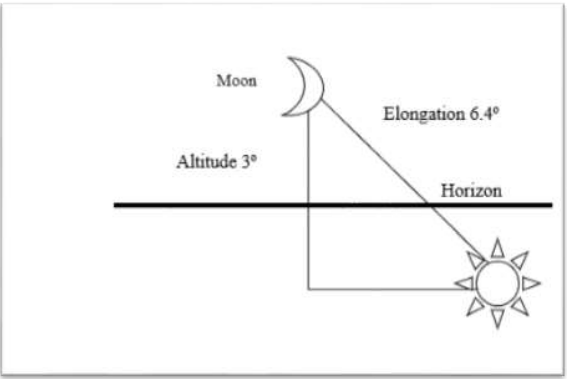
In the Hijriah or Islamic calendar, the first day of the lunar month is counted when you can see the moon’s first crescent the night before, if it fulfills the conditions mentioned before. Contrast this with another lunar based calendar such as the Chinese “lunar solar” calendar, which starts the new month when the new moon (basically when the moon is black) is seen the night before.
As a result, the Chinese calendar month would start about a day or two earlier than the Islamic calendar month. You might have noticed this overlap before when we celebrated ‘Kongsi Raya’ for 3 straight years from 1996 to 1998.

Ppl are Twihards smh fr
You might feel that the requirements feel oddly specific: anak bulan is anak bulan, right? But there’s a good reason for that. Before it was standardised in 1992, there were some disputes on the requirements, and because of that in 1983, two states – Perak and Johor – celebrated Raya one day earlier than the rest of Malaysia.
You can actually go take a look yourself
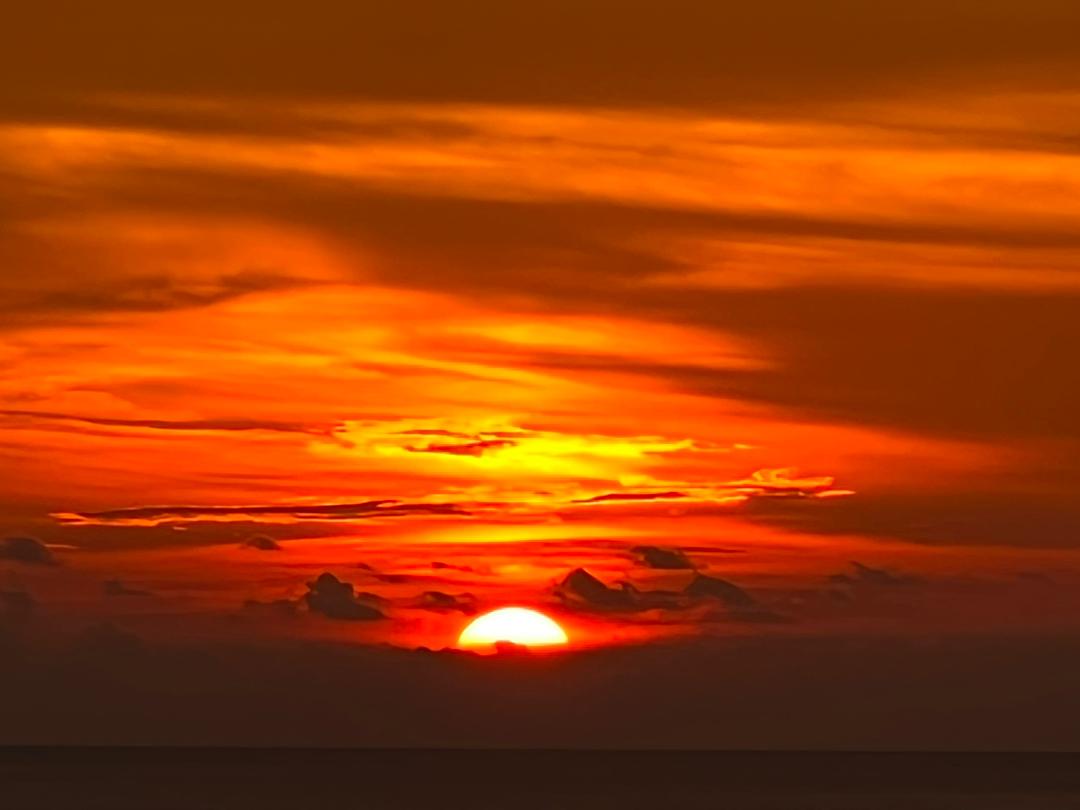
Just a regular everyday view from the observatory. Image courtesy of Pusat Falak Sheikh Tahir.
Another cool thing we found out is that observatories would sometimes welcome visitors at night, past the standard office hours of 8.30am to 5.30pm, but then we also realised that they’re astronomers so obviously they’ll work at night (duh).
But observatories in Malaysia do tend to open their doors at night if there are events such as meteor showers for example. Just make sure you call ahead and check if they’re open that night, or just check out their Facebook page, or your local observatory.
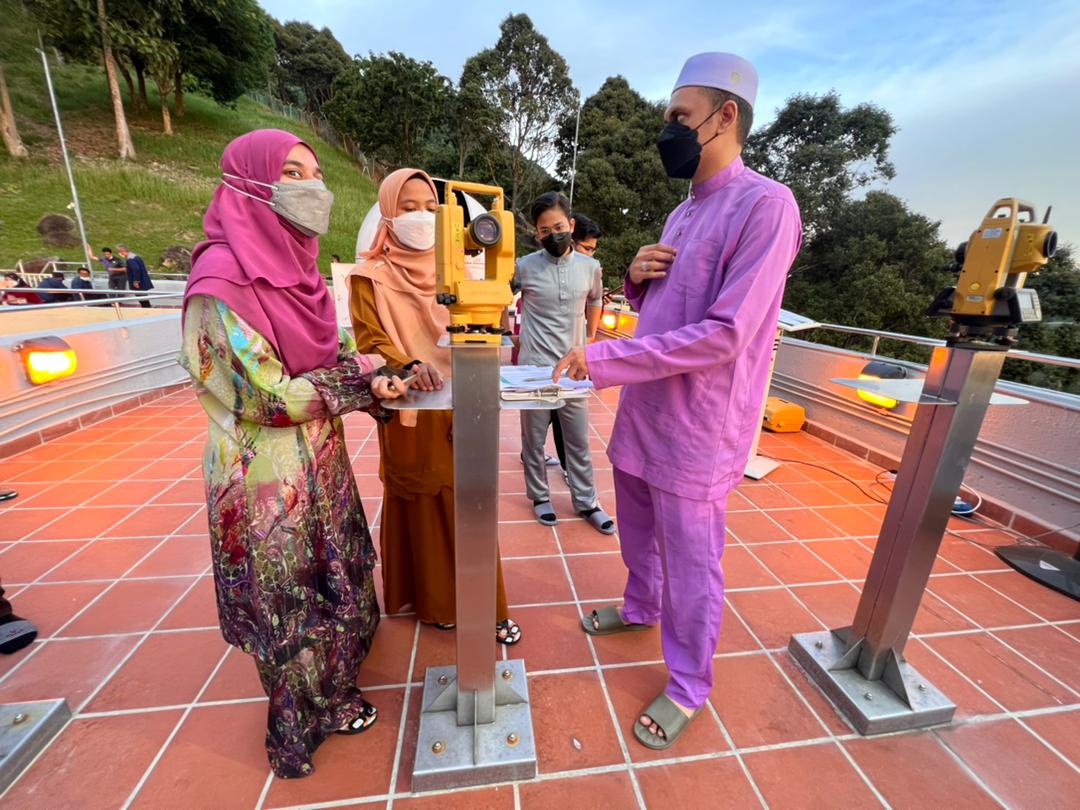
Image courtesy of Pusat Falak Sheikh Tahir
This article is NOT sponsored by JAKIM okay (which would be amazing btw), but if you are from JAKIM and would like to, pls contact our Head of Sales at [email protected]
And finally to our Muslim friends, selamat berpuasahari raya!
- 2.1KShares
- Facebook1.9K
- Twitter5
- LinkedIn15
- Email14
- WhatsApp102






